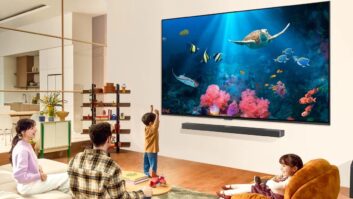Perhaps more than any of the last 20 years, 1996 holds some of the most striking consumer electronics parallels — and ironies — in relation to events we are observing today.
However, sales volumes were not even in the same ballpark. The then-called Consumer Electronics Manufacturers Association (CEMA) reported that 1996’s CE factory sales rose 4 percent over the prior year to top $65 billion. By comparison, the Consumer Electronics Association reported that CE factory sales in 2005 were $125.9 million.
But beyond that, things in 1996 sounded hauntingly familiar. For starters, the world was bracing for the arrival of a new high-density optical video disc format called Digital Video Disc or Digital Versatile Disc (DVD), depending on which member of the two originally opposing format camps you were talking to. Surprise, surprise — these camps included the Super Density (SD) Disc camp spearheaded by Toshiba, Warner Brothers, Thomson and others, and the Multi Media CD (MMC) camp, championed by Sony, Philips and others.
Not too coincidentally, many of those same parties have taken similar sides in the brewing HD DVD (Toshiba, NEC and originally Warner Brothers) and Blu-ray Disc (Sony, Philips, Panasonic and others) format war.
Unlike events transpiring today, the members of the two camps listened to the pressures of Hollywood Studios, combined their systems into one now highly successful DVD format, and staged the industry’s first “bloodless format war,” as then Warner Home Video president, Warren Lieberfarb, called it.
Toshiba, which along with Warner Brothers led the SD camp, was one of the first manufacturers to announce a pair of DVD players at the 1996 Winter Consumer Electronics Show. The company maintained throughout most of the year that it would sell its SD-1006 ($599 suggested retail) and SD-3006 ($699) players around Labor Day, but eventually announced an early 1997 launch, due to a long drawn out process of adopting a copy protection standard through the multi-industry Copy Protection Technical Working Group.
Ironically, Toshiba had announced plans to market its first HD DVD players in 2005, only to push those plans back to 2006 after unsettled content protection issues disrupted software production schedules.
Also during 1996, the U.S. high-definition television revolution was born when the Federal Communications Commission signed off on Advanced Television (ATV) specifications that would set the course for today’s digital broadcasting system. That version of the standard, which culminated from a compromise between the television and computer industries, left open if digital broadcasts would be interlaced of progressive.
Eventually, the completed Advanced Television Systems Committee specifications would encompass 18 picture formats for terrestrial broadcast ranging from the standard-definition 480 interlaced image familiar in analog TV to the 720 progressive and 1,080 interlaced high-definition widescreen picture formats that are taking root in American living rooms today.
The FCC approval cleared the way for the launch of the first high-definition TV sets, which would appear at CES in 1997 and 1998.
Another emerging trend as hyped at the short-lived Spring CES in Orlando, Fla., and at RetailVision that year was the “convergence” of PC and TV technologies into hybrid systems that foreshadowed today’s growing Media Center PCs. Gateway launched its Destination PC/TV system and dozens of manufacturers either announced plans for similar products or showed prototypes of such products they planned to bring to market.
The trend eventually slowed to a trickle, before showing new forms of life three years ago with the arrival of Media Center PCs, based on Microsoft’s Windows Media Center operating system.
Early in the year, Mitsubishi became one of the first in a line of TV makers to announce plans to enter into the prenatal flat-panel TV market, and showed dealers and press some prototype plasma panels with 4:3 aspect ratios. Mitsubishi’s then consumer electronics president Jack Osborn said he expected final products to sell for between $8,000 and $10,000, and to offer enhanced graphics display capabilities.













